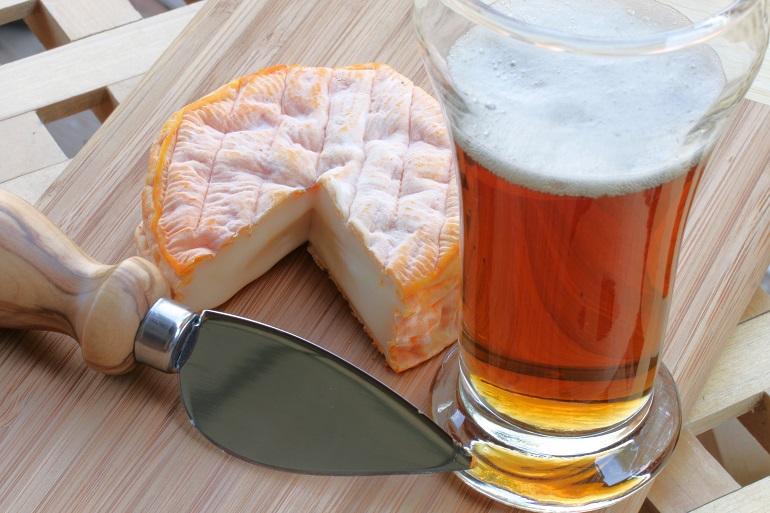Start 14-Day Trial Subscription
*No credit card required

Beer Goes Haute
Our story begins as a beer writer – let’s call him Stephen – and his soon-to-be bride enter a tip-of-everyone’s-tongue kind of restaurant in Miami for the lady’s birthday dinner.
Refugees from the Canadian winter, they have discovered that Miami weather even in January can raise a significant thirst, and so our humble scribe is hoping, although not necessarily expecting, that he might find something interesting and refreshing on the restaurant’s beer list.
And lo and behold, he does! To Stephen’s delight and surprise, Michael’s Genuine Food & Drink, a critically applauded spot in Miami’s Design District, boasts a beer menu that marches from the pedestrian (PBR, presumably for would-be hipsters) to the interesting (Köstritzer Schwarzbier and Lakefront Organic ESB) and all the way to the altogether remarkable (Avery Maharaja and Barney Flats Oatmeal Stout). Even more astounding in a well-regarded culinary oasis such as this, the list covers a wide range of styles and tastes – from German pilsner to English bitter and Belgian Trappist – and contains something complementary to most of the restaurant’s main dishes.
Of course, that was then and this is now. Two years and one global economic meltdown later, and what was then practically ground-breaking is today hardly worth mentioning. Yes, it took the near-complete decimation of the economy to do it, but beer is now more than ever a fixture at North American fine-dining restaurants.
If this comes as news to you, you’ve likely been cutting back on your restaurant dining, as so many of us have, or you haven’t been paying attention when you do eat out. Because in recent times, the more tony and expensive the restaurant is the greater the likelihood that it has either opened a bistro extension selling simpler dishes and stocking the beers that so naturally partner with them, or the sommelier has discovered that where people might balk at $200 bottles of vino, they welcome the indulgence of a $20 bottle of beer. It’s all just restaurant economics, plain and simple.
This is something fresh and welcome on this side of the Atlantic, of course, but not so much new to our European beer connoisseur brethren. Particularly in Belgium, while wine might yet dominate – the Belgians are the highest per capita consumers of French wine outside of France – beer has had a place at the tables of even the finest restaurants for quite some time, generations even.
It was more than a few years ago that I experienced my first meal at the revered Brussels restaurant, Comme Chez Soi, and afterwards enjoyed a pleasurable and often spirited chat with the patriarch and executive chef of the then-three-Michelin-starred landmark, Pierre Wynants. Although primarily concerned with food, cooking techniques and Belgian food traditions, our conversation almost inevitably veered towards beer, about which I was surprised to find the storied chef was most passionate. In particular, he spoke with great affection of his Bruxellois neighbor, Brasserie Cantillon, brewers of arguably the world’s most famous traditional lambics.
Discovering such ardor for, and knowledge of, beer in a chef of international renown was certainly unexpected, especially considering that at the time finding a decent beer in a restaurant of note in pretty much any major North American city was akin to a search for the proverbial haystack-hidden needle. Even more unforeseen, however, was what greeted me on my return to the hotel that evening: a copy of “Le Coeur Gourmand de la Belgique,” a tribute to the “gastronomic heart” of Belgium penned by Wynants and his sous chef son-in-law, Lionel Rigolet.
That a man who no less than the venerated food writer Patricia Wells once noted “might be considered one of the elders of great European cuisine” would co-author a book lauding, among other Belgian classics, the beers of both Cantillon and Orval, well, that was nothing short of remarkable. That he would also have the temerity to suggest pairing some of the included recipes with beer was to me simply astounding.

And the haute cuisine beer love didn’t stop at the Belgian border, either. In Germany, too, I found fine lagers and wheat beers on the menus of high-end restaurants, not in abundance, of course – even Teutonic beer halls tend to boast limited selections, usually dominated by one brewery – but representative of at least a few of Germany’s many beer styles. Where traditional regional dishes dotted the menu, even if tarted up to suit the sophisticated atmosphere and elevated prices of the restaurant, beer was and remains even more likely to belong.
Also in Britain I can say I have frequently come across the combination of excellence in cuisine and beer. Notwithstanding the questionable service I once received there, I have enjoyed splendid food accompanied by equally wonderful ales at Fergus Henderson’s renowned St. JOHN Bar & Restaurant in London, and I distinctly remember many years back beginning my meal with ale at City Rhodes, the breakout restaurant of the esteemed British chef, Gary Rhodes.
Even a non-brewing nation like Italy has recently started to come around to the notion that beer can be as sophisticated a gastronomic foil as can any Chianti or Barolo.
In North America, on the other hand, we’ve been rather slow on the uptake. With a few exceptions proving the rule – like the popular restaurants Bob Townsend describes in the dining guide on pages 32 and 33 – beer and fine food on these shores have for decades been as mutually exclusive as the Toronto Maple Leafs and the Stanley Cup playoffs. Which is to say that it happens, but not very often, and it’s usually disappointing when it does.
But as I noted earlier, attitudes are shifting now, and although the cause may be economic, the gastronomic logic of the move is undeniable.
Take the recent darling dish of the foodie set, for example: the cheese plate. If you own the premier issue of The Beer Connoisseur, you will know how well beer can pair with cheese, but absent from Nick Kaye’s excellent article was the dirty little secret that most sommeliers will admit to in only their most unguarded moments, namely that most wine does not pair particularly well with cheese!
It’s true. So true, in fact, that there’s a saying in the wine biz: “Taste with bread, sell with cheese.” Because, you see, all that butterfat can soften the tannins of an immature red or smooth the sharp edges of a too rough white, making the wine more appealing but not necessarily adding any positives to the pairing experience. Beer, on the other hand, fits the cheese course bill marvelously and can be affordably ordered in multiple styles so that it is possible to have a different brew to sip with each of the silky goat, pungent cheddar and aggressive blue cheeses.
Other partnerships abound. Soups are typically a great challenge for wine but can be matched to beers in a manner that benefits both food and drink. Salads, too – try asking the sommelier for a wine recommendation the next time you order a salad and watch them squirm! And wine professionals might claim to have labels in their cellar that can go with any dessert, but more often than not what they select will be a mere place-holder until the cognacs and ports and single malts can be trotted out as digestif. Beer, meanwhile, can manage anything from flourless chocolate cake to crème brulée and do so with delicious aplomb.
So why, one might ask, has it taken so long for our high-end restaurateurs to catch on? The answer is the same simple reason they’ve changed course as of late – economics again. Restaurateurs believe that they make more on a bottle of wine than they do on a beer, so they push the former rather than the latter, never mind that a customer might order three or four bottles of high-end beer rather than a single, shared bottle of wine.
So long as that thinking persists – and despite the gains for beer I have noted, it does persist in many quarters – beer will likely remain a poor cousin to wine where fine dining is concerned. But hey, at least we’ve got our connoisseur foot in the door, even if it did take Fannie Mae, Freddie Mac and the Lehman Brothers to get it there.



